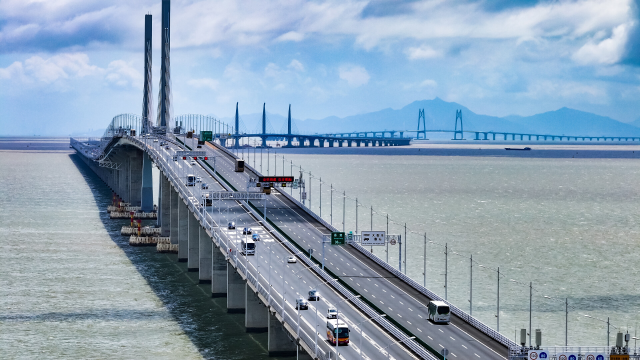At a press conference on November 3, Guangdong unveiled major achievements in advancing the development of the Guangdong-Hong Kong-Macao Greater Bay Area (GBA) during the 14th Five-Year Plan period. A high-quality living environment for residents, workers, and travelers has initially taken shape in the GBA during this time.
2025 marks the final year of China's 14th Five-Year Plan (2021-2025). The five-year plans serve as a comprehensive blueprint for China's economic and social advancement, outlining goals, strategies, and priorities for each planning cycle. Each province formulates its five-year plan accordingly.
According to the press conference, the progress focuses on three key areas: deepening sci-tech and industrial cooperation, enhancing comprehensive connectivity, and strengthening the role of major cooperation platforms.

Guangdong has made steady strides in developing the GBA into an international innovation and technology hub. Major scientific facilities, such as the China Spallation Neutron Source and the Tianhe-2 supercomputing center, have been opened to Hong Kong and Macao. The province has jointly established 32 laboratories and deepened collaboration with universities and research institutes in the two SARs.
Infrastructure connectivity has expanded significantly. The region's rail transit network now exceeds 3,000 kilometers. Landmark cross-sea projects, including the Shenzhen-Zhongshan Link and the Huangmaohai Cross-sea Passage, have been completed and opened to traffic, reducing travel time between Shenzhen and Zhongshan from two hours to just 30 minutes.
Logistics and customs clearance have become more efficient. The Dongguan-Hong Kong International Airport Center recorded over 40 billion yuan in import and export trade, while the one-stop customs clearance model now covers all mainland cities in the GBA, reducing declaration costs by about 30%.
Cross-border exchanges have grown rapidly. Policies facilitating mainland travel permits for Hong Kong and Macao professionals have been fully implemented, and programs such as "Hong Kong Vehicles Northbound" and "Macao Vehicles Northbound" have seen over 7 million vehicle crossings. A total of 262 new standards have been issued. More than 8,000 professionals from Hong Kong and Macao are now practicing in mainland GBA cities, while 45 hospitals are qualified to use Hong Kong- and Macao-approved medicines and devices, benefiting over 10,000 patients.
Major cooperation areas, including Hengqin, Qianhai, Nansha, and Hetao, have continued to drive reform and opening-up. The Guangdong-Macao In-Depth Cooperation Zone in Hengqin has fully implemented its separate management policy, with new technologies, industries, business forms, and models accounting for over 60% of local GDP, supporting Macao's moderate economic diversification.
Qianhai in Shenzhen has become a hub for financial and legal resources, attracting over 500 international financial institutions and more than 250 legal service organizations. Nansha in Guangzhou now hosts 53 national-level specialized enterprises and 1,310 high-tech firms. Hetao in Shenzhen has developed 13 science parks with more than 800,000 square meters of R&D space, attracting over 200 high-end research projects and 15,000 researchers.
Reporter | Dai Bosi
Photo | Nanfang Plus
Editor | Hu Nan, James Campion, Shen He
















